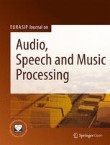Search on speech from spoken queries: the Multi-domain International ALBAYZIN 2018 Query-by-Example Spoken Term Detection Evaluation
The huge amount of information stored in audio and video repositories makes search on speech (SoS) a priority area nowadays. Within SoS, Query-by-Example Spoken Term Detection (QbE STD) aims to retrieve data f...
